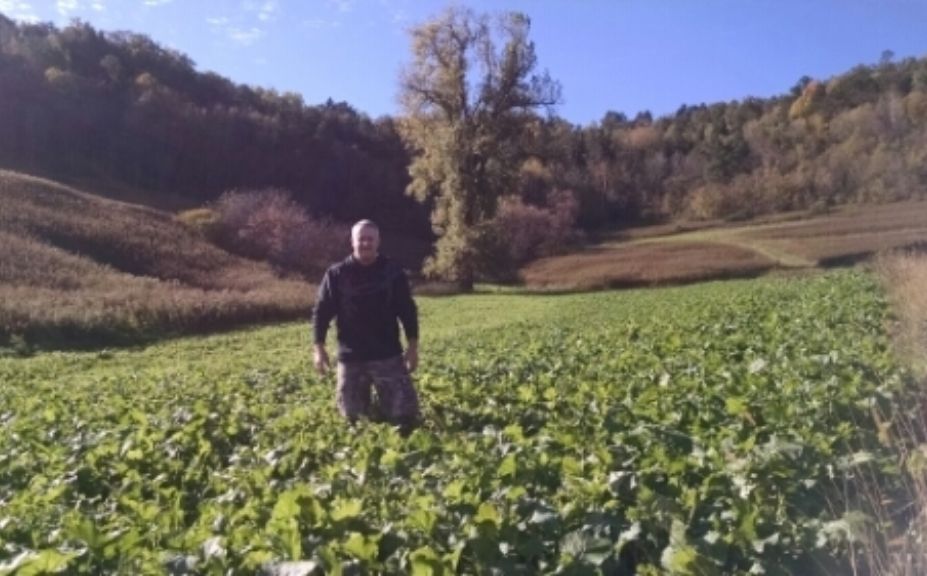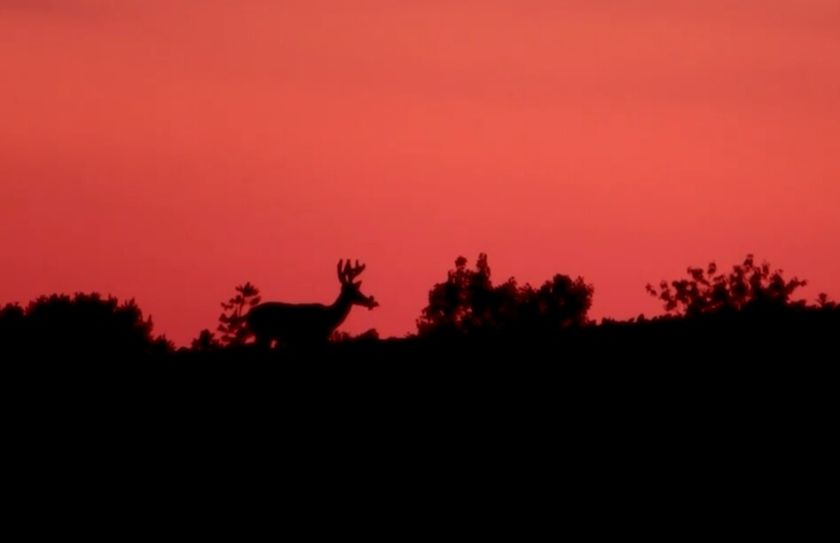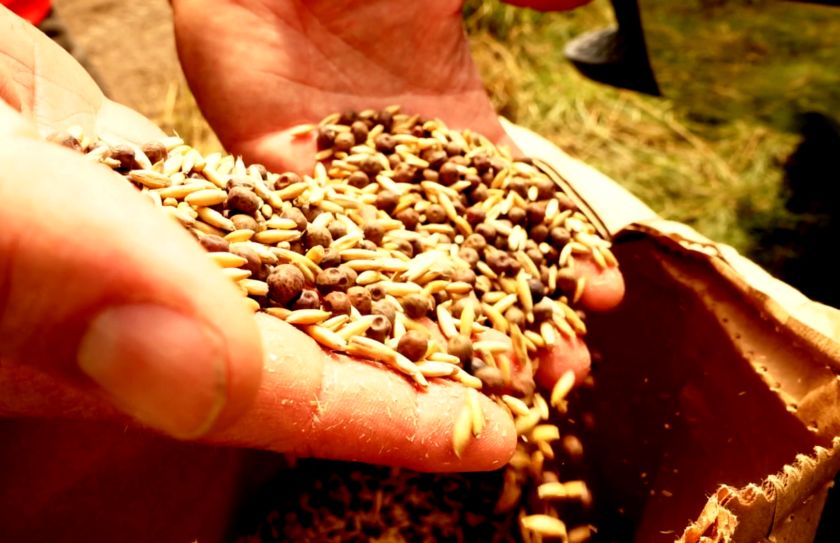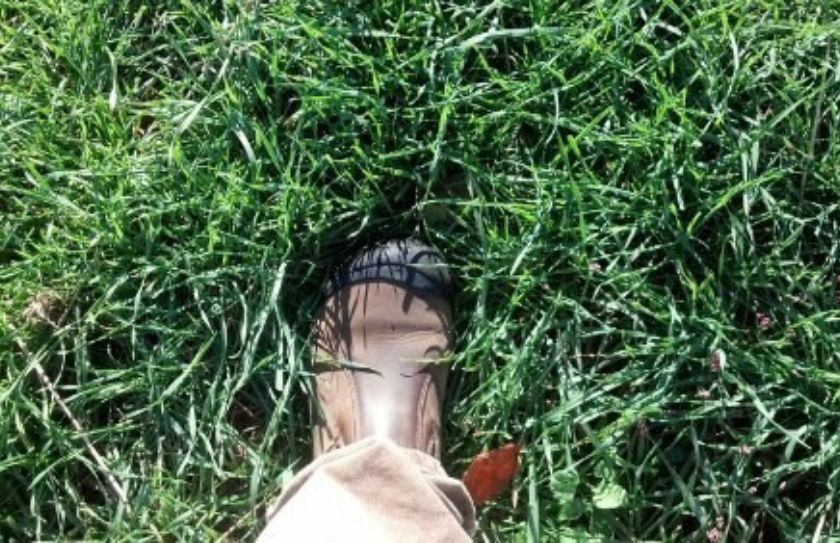
Ed Spinnazola was and still is, widely regarded as one of the most knowledgeable food plot planting specialist. So in 1999 when Ed called and asked if I wanted to try planting a brassica food plot on our new land in the UP of MI my answer was a very quick, "YES"! I had no idea what a huge journey that planting a few pounds of seed to produce up to 3-4 tons of forage per acre, would begin.
Varieties of rape, turnip, kale, canola and radish may be fresh in your experiences as it relates to species commonly included within brassica food plots for deer, but did you know that the brassica family also includes mustard, cabbage, broccoli and Brussels sprouts? The abundance of brassica species is also reflected within the incredible number of blends used within commercially combined products. By spending just a couple of minutes within the seed isle at your favorite hunting supply retailer, you will find many of the species I have mentioned on seed labels by only walking a few feet. Because of the many species available as well as quite a bit of misinformation, the use of this magical little seed is widely misunderstood. But enough of the formalities of brassica food plot blends...how and why should you use them for your hunting and habitat efforts?
Common Brassica Misconceptions
1. "There needs to be a frost to get the deer to eat brassicas"
This couldn't be further from the truth. It's an easy to statement to grab and latch onto (and even sounds cool), but it reflects a lack of experience with this power-packed little seed blend. Depending on the parcel (even neighboring parcels can vary greatly) the rate of foraging on a brassica planting can vary from "nothing left on the ground within a month of planting" to "rotting bulbs and greens in the Spring". Why? Because although the "first frost date" sounds good on paper, it's apparent a wide range of deer herds didn't get the memo. I am not even convinced the "first frost date" is even within the middle of the range of potential foraging dates; a range that can literally vary by as many as 7 months from parcel to parcel.
2. "Deer need to be trained to eat them"
It makes sense, right? If a deer has never seen a brassica planting, they need to get used to them for a while before they begin to eat them. Again...the deer didn't get them memo on this one either. My first experience back in 1999 really hammered this (and the first-frost thought) home for me while planting my first brassica food plot! My goal was to establish a clover blend within the location for my first planting. So, I combined the annual brassica blend that Ed gave to me, with a perennial commercial clover blend. The plot was ready to plant in the Spring, and I had a dream of having a beautiful brassica crop for the Fall hunting season, with the lasting establishment of the cover crop. Although the clover crop was a huge success, the brassica crop wasn't and there was a great reason: Total consumption.
My first brassica food plot was planted in May of 2000, the plants grew to nearly a foot by late June, and by July the entire crop was completely consumed. There was no frost, a deer population of less than 15 per square mile and this is key: There were no quality forages within 20 miles! Why would a small deer herd that had never been exposed to a brassica planting consume the first plants they had ever seen without a first-frost, within 6 weeks of planting? That was a question I was left to ponder for the next few years before finally coming to the conclusion that my local deer herd was no different then many other deer herds across the country that just didn't follow the script of misconception. 15 years have passed following that first planting and I have had the luxury of experiencing the planting results of nearly 500 clients scattered across 17 states. And WOW results do indeed vary greatly!
Brassica Use by Your Deer Herd
There are several reasons that the use of brassica plantings may vary greatly from your land to another's and they are discussed in detail within the article, "Balanced Food Plot Blends for Small Parcels". However, here are some of the critical details:
1. % of Agricultural vs. Wooded Settings
My first brassica food plot in 2000 was located within Northern MI's heavily forested wilderness setting consisting of 10s of thousands of public land acres, deer populations as low as 5 deer per square mile and a winter kill that includes an average of 50% of all fawns. Sound extreme? It is, and so was the brassica use. At the same time, that same level of foraging has been mirrored by other similar locations that are far removed from major agricultural settings. When the % of cover increases, so does the potential foraging rate on brassica food plots.
2. Quality Habitat Forage Opportunity
It's pretty darn tough to find high quality forages within northern habitat settings. Northern poor soils, short growing seasons and a lack of quality herbacious growth creates a lot hungry deer...at least hungry deer in search of quality food. But as the growing seasons increase and the local habitat produces high quality native forages, brassica plants can often begin to receive much lower grazing rates. And that also extends to other varieties of food plot plantings as well! When a brassica leaf is the only source of green forage within a deer's diet expect heavy grazing pressure, but when other choices are plentiful the resuls may be minimal, and that includes large portions of agricultural settings
3. Overall Deer Population Numbers
Within low-quality natural forage habitats in Northern settings a small deer population can consume incredibly large quantities of brassica, within a short period of time, due to the general lack of other quality options. However if those same deer numbers are present in a heavy agricultural setting the same sized brassica planting may not be touched at all. In some cases you could even make an arguement in various agricultural settings that if deer ignore a brassica food plot the deer numbers may be too low, but of course there are many other variables that we are discussing here. In areas of light deer consumption you can expect the foraging rate to change as the population increases, and native foraging options are deminished through competition.
4. Established Patterns of Use
Many of the brassica food plots that I have seen rotting in the Spring, were within planting locations that included no other forage options. Every variety of food plot forage has an optimum targeted window of potential deer usage that is typically 6-8 weeks or less, including a few of the common varieties of clover (early to mid-season), corn (mid to late-season), soybeans (pre-season and late), cereal grains (early-season, mid, and Spring) and brassicas (mid to late-season). Deer are creatures of pattern and structure. I often think that if a doe family group could live within 10 acres of conistent adequate food and cover all year-they would! So, it make sense that if the deer in your area are keying on a pre-season to early-season food source on 1 side of your land, you may be setting yourself up for disappointment if you expect those same deer to move to the complete opposite side of your land to begin foraging on a late season food source. Establishing a pattern of use on your food plots is equally important whether you are planting a late season offering of corn, soybeans or brassicas!
How do you establish a pattern of use? My favorite, "tried and true" tactic is to divide each plot in 1/2 (complimenting the direction of travel you are attempting to define), or even in 1/3rds and then plant each portion of the plot in a different forage variety that targets the entire season and not early, mid or late. Do deer have a hard time "adjusting" to your brassica plantings? Try planting them alongside an early season offering of peas, oats, rye or clover. If that isn't enough, add 25#s of soybeans drilled into your brassica planting, as well as 25-50#s of forage peas. By planting brassicas adjacent to (same plot area) early season offerings, as well as by sweetening the plot with peas and beans, it is really hard to find a situation where the deer have ignored the planting! In fact I am not sure that I have actually heard of a plot that wasn't utilized during the season by using both of those methods.
Hunting by Brassica
If you are located within a wilderness settings you may need a brassica food plot of several acres or more to combat the intense grazing pressure that you will experience...whether you have low deer numbers or not! That means that you certainly don't want to sweeten the plot with peas and beans because you will only magnify the potential problem. On the other hand in low consumption areas you can learn to adjust your planting methods to match the critical period of time for deer to be feeding on your land. What is that time? I would guess that if your habitat and hunting needs are like mine, than November is your #1 time for deer to be heavily attracted and holding on your land.
Brassicas offer you an outstanding opportunity to attract and hold deer on your land during November, which in the North 1/2 of the country can be by far the most imporant month to do so. May is a really cool time for deer in the whitetail woods, but often there is typically an overabundance of quality food during the month and fat young bucks in May, get killed in November if they aren't attracted on held safely. In fact, within the North 1/2 of the whitetail range, the last week of October, all of November, and the first portion of December can be the period of time that you can influence the deer herd the most...often even more than when combining the entire rest of the year! It is critical that you match the timing of your habitat efforts to be available during the period of the season that whitetails are exposed to the most amount of pressure. My personal practice is to match the balance of the brassica utilization on the lands that I hunt or manage, with the needs of the local deer herd...and that means November.
A brassica food plot can be the perfect compliment to many hunter's land and herd management efforts. Brassica plants are typically not the best early season planting, and although the deer may attack a brassica food plot in January I believe that you can hit that sweet spot of middle portion of the season by adjusting your planting methods as needed.
*Are the deer not hitting your brassica plot until February? Try establishing a pattern of use early by offering an adjacent pre-season to mid season forage to the plot, as well as adding plot sweeteners
*Are the deer not foraging until late December? Try adding a sweetener.
You should always offer diverse food plots with something other than just a brassica combination, and that applies to corn, beans, rye, wheat and just about any other food plot forage that you expect deer to utilize during the hunting season. You can then adjust your planting methods to make sure the timing fits the window of greatest need. What is your personal need? Mine has always been to build a quality deer herd, advance young bucks, create improved sex ratios, harvest does when and if needed, and finally to be able to definitively have opportunities to harvest the oldest age structure of bucks possible on the land I hunt. My ability to consistently accomplish all of that is determined by what I do in October/NOVEMBER/December, and not typically January-September.
Conclusion
That call from Ed Spinnazola in 1999 seems like a very long time ago when I think of the 100s of brassica food plots for myself and my clients between then, and now. But even now nothing has changed! If in the end you just can't get the local deer herd to consume them during the most critical time of the year it's really a shame. Why? Because those few pounds of seed have the power to offer tons of food when you need it the most, in the majority of the North 1/2 of the country. Even more importantly in that case the deer are really missing out! Whether your goal is to build a quality herd by attracting, holding and advancing young bucks into the next age class, building a quality herd or harvesting mature bucks, planting a brassica plot has the power to help you do it all. It may take a little adjustment in your planting methods, but for the vast majority of landowners, hitting that sweet spot of "critical need" is there for the taking by planting a brassica food plot.

*Outstanding Northwoods Whitetails Brassica Food Plot Blend!


